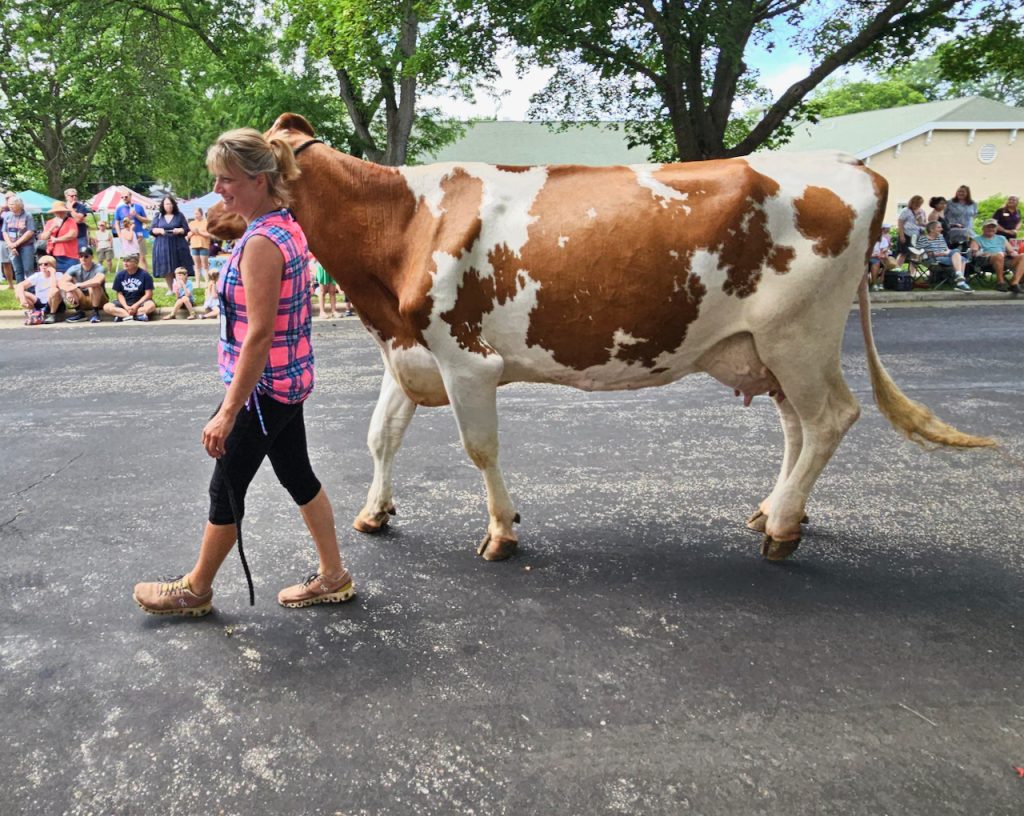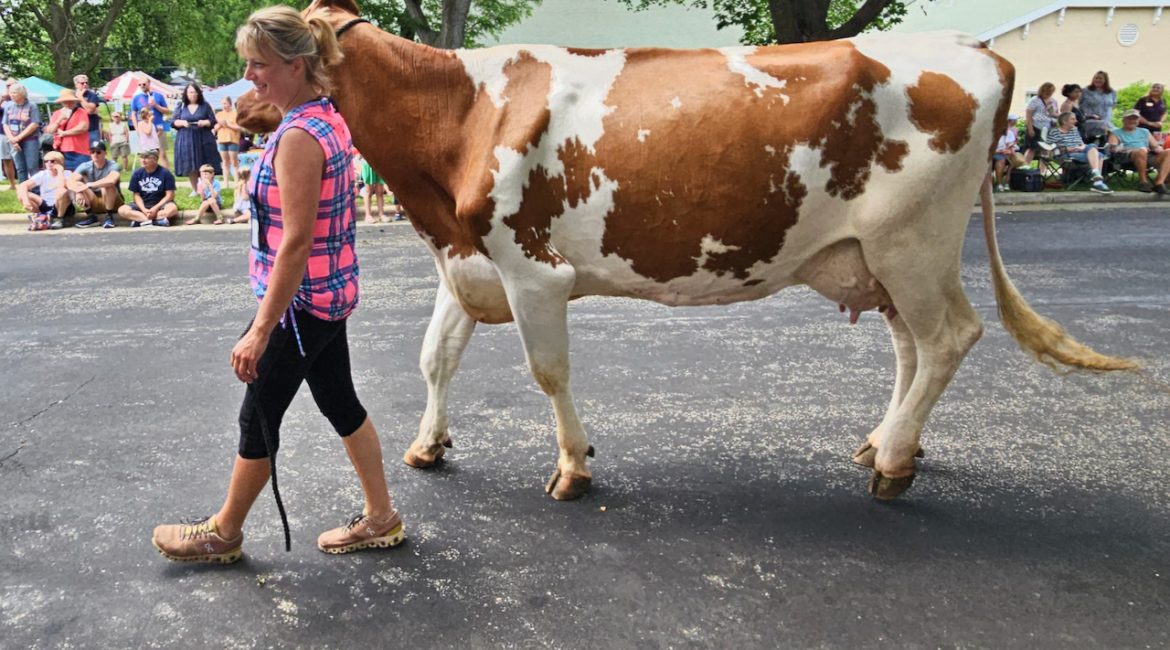Mother Nature couldn’t have served up more perfect weather for the 10th annual Dairy Day at the MOOseum on Saturday.
Sunshine, pleasant temperatures and an ever-so-slight breeze beckoned residents from throughout Jefferson County to Fort Atkinson’s Hoard Historical Museum.
It’s just the right place for a June Dairy Month celebration, considering that dairying’s roots run deep in Fort Atkinson.
After all, it was local newspaper publisher William Dempster Hoard who essentially spearheaded Wisconsin’s switch from growing wheat to alfalfa (replenishing the soil’s nutrients and feeding dairy cows) back in the late 19th century. The city has been home to his Hoard’s Dairyman magazine, as well as other dairy-related industries including Nasco, Creamery Packaging, James Manufacturing Co. And the museum named for Hoard also is the site of the National Dairy Shrine.
One of Dairy Day at the MOOseum’s big draws each year is the cow parade showcasing the seven main dairy breeds. As their owners lead the cows up and down Foster Street, museum director Merrilee Lee reads interesting trivia and history about the breeds and the dairy industry in general. So in honor of June Dairy Month, we’d like to share some of what Lee had to say on Saturday.
First, let’s get the lingo right. One of the things laypersons often get wrong is dairy terminology, calling any and all cattle with four legs and teats a cow. But actually, a cow is a female who has had a baby or calf. A female calf is a heifer until she gives birth to her first calf; then she becomes a cow. The father, of course, is a bull.
When driving in the country, we enjoy seeing cows out to pasture, grazing on alfalfa or simply relaxing in the shade. But they certainly aren’t lazy animals by any means. Most cows can run 5 to 8 miles per hour … though they can’t keep it up very long.
Here’s some more trivia for your dinner table conversation: It takes 1.5 to 2 acres of grass to feed a cow and her calf for one year. Cows can drink nearly a bathtub of water daily. And cows are ruminants, meaning they have one stomach with four compartments. They even have a special spot in their belly for when they accidentally eat something they shouldn’t so it doesn’t harm their health.
Typically, Ayrshire, Guernsey and Jersey cows give enough milk each day to produce seven pounds of cheese. Milking Shorthorns’ output is a little less, enough for six pounds, while Brown Swiss, Holsteins and Red-and-White Holsteins give enough milk to make eight pounds of cheese.
And continuing to compare the breeds, Ayrshires originated in Scotland and were brought to the United States circa 1820. Known for their width and power, Ayrshires are medium in size (1,100 to 1,300 pounds), long-lived and easy to milk and raise.
As their name implies, Brown Swiss arrived in America from the Swiss Alps in the late 1860s. Rugged with the ability to stand extreme temperatures, they average 1,300 to 1,500 pounds.
The Guernsey breed was developed on the Isle of Guernsey off the coast of England. Weighing 1,200 to 1,400 pounds when grown, these cows are known for the high butterfat content in their milk.
Jerseys hailed from the Isle of Jersey, again in the English Channel, in the 1850s. The smallest of the dairy breeds, they only weigh 900 to 1,100 pounds fully grown. Their milk also is very high in milk fat and cream, making it popular for producing cheese, butter and ice-cream makers.
Milking Shorthorns are one of the oldest breeds, first arriving in the United States from England in the 1780s. Adapted from the Shorthorn beef breed, they average 1,300 to 1,500 pounds when mature.
However, perhaps the most well-known of the breeds are the Holsteins. Originally from Northern Europe, they were imported here from Holland in the mid-1800s. Mature cows weigh 1,400 to 1,600 pounds and, in the United States, they make up more than 90 percent of the dairy cow population.
Red-and-White Holsteins are a variation of the “regular” black-and-whites, thanks to a recessive gene. Two black-and-white Holsteins can bear a red-and-white calf, just like brunette humans can have a blonde child. It’s just genetics.
And there you have it: Some tidbits to share with friends and family this June. Come to think of it, file them away to share anytime during the year, because in Wisconsin — and particularly Fort Atkinson — every month is Dairy Month.

A Red-and-White Holstein saunters down Foster Street during Saturday’s cow parade. The event was part of Dairy Day at the MOOseum, held at the Hoard Historical Museum in Fort Atkinson. Chris Spangler photo.
This post has already been read 1515 times!
